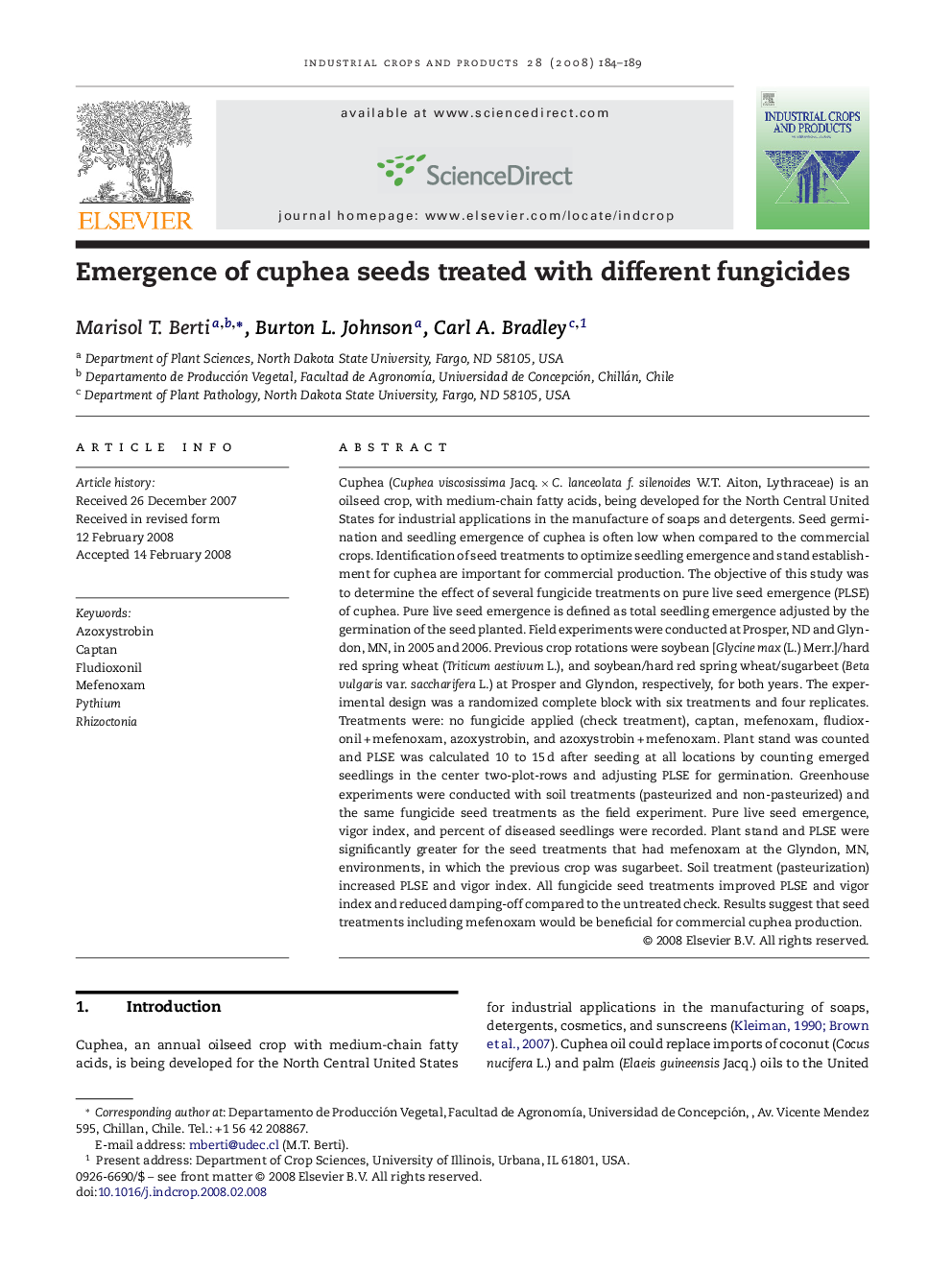| کد مقاله | کد نشریه | سال انتشار | مقاله انگلیسی | نسخه تمام متن |
|---|---|---|---|---|
| 4515052 | 1322227 | 2008 | 6 صفحه PDF | دانلود رایگان |

Cuphea (Cuphea viscosissima Jacq. × C. lanceolata f. silenoides W.T. Aiton, Lythraceae) is an oilseed crop, with medium-chain fatty acids, being developed for the North Central United States for industrial applications in the manufacture of soaps and detergents. Seed germination and seedling emergence of cuphea is often low when compared to the commercial crops. Identification of seed treatments to optimize seedling emergence and stand establishment for cuphea are important for commercial production. The objective of this study was to determine the effect of several fungicide treatments on pure live seed emergence (PLSE) of cuphea. Pure live seed emergence is defined as total seedling emergence adjusted by the germination of the seed planted. Field experiments were conducted at Prosper, ND and Glyndon, MN, in 2005 and 2006. Previous crop rotations were soybean [Glycine max (L.) Merr.]/hard red spring wheat (Triticum aestivum L.), and soybean/hard red spring wheat/sugarbeet (Beta vulgaris var. saccharifera L.) at Prosper and Glyndon, respectively, for both years. The experimental design was a randomized complete block with six treatments and four replicates. Treatments were: no fungicide applied (check treatment), captan, mefenoxam, fludioxonil + mefenoxam, azoxystrobin, and azoxystrobin + mefenoxam. Plant stand was counted and PLSE was calculated 10 to 15 d after seeding at all locations by counting emerged seedlings in the center two-plot-rows and adjusting PLSE for germination. Greenhouse experiments were conducted with soil treatments (pasteurized and non-pasteurized) and the same fungicide seed treatments as the field experiment. Pure live seed emergence, vigor index, and percent of diseased seedlings were recorded. Plant stand and PLSE were significantly greater for the seed treatments that had mefenoxam at the Glyndon, MN, environments, in which the previous crop was sugarbeet. Soil treatment (pasteurization) increased PLSE and vigor index. All fungicide seed treatments improved PLSE and vigor index and reduced damping-off compared to the untreated check. Results suggest that seed treatments including mefenoxam would be beneficial for commercial cuphea production.
Journal: Industrial Crops and Products - Volume 28, Issue 2, September 2008, Pages 184–189